Last autumn the town of Norcia in Umbria suffered a devastating blow after an earthquake hit. Hannah Frances went back to see how the town fought back.
Autumn is a great time to see Norcia, says Hannah Frances. Fractured by last October’s earthquake, the determined and resilient town in the heart of Umbria is coming back stronger, and there are great things for visitors to discover…
“It’s a pleasure to introduce the flavours of our town” said head chef Valentino Palmisano, as a slim, rectangular plate of local delicacies – including silky folds of prosciutto crudo, ever-so-slightly spicy and synonymous with the town – were placed in front of us. “Welcome to Norcia!”
Famous as the birthplace of St Benedict and widely considered to be one of Italy’s greatest foodie outposts, Norcia is a rural yet sophisticated place at the edge of the Parco Nazionale dei Monti Sibillini in southeast Umbria.
Last autumn was devastating for the medieval town. The earthquake that hit Amatrice in August, tragically killing 300 people, was followed in October by a powerful 6.6 magnitude quake at Norcia. Thankfully there were no casualties this time, but the 14th-century Basilica of St Benedict was almost completely flattened, thousands of families were displaced and many businesses have been affected.
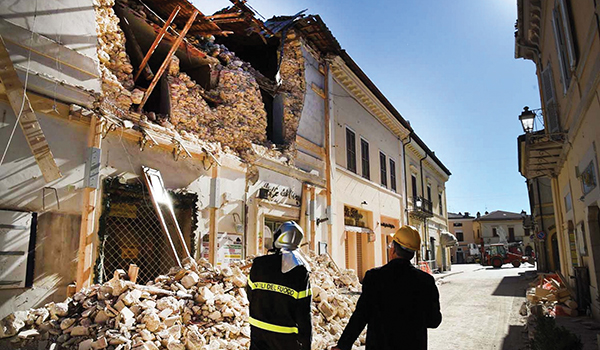
Norcia has slowly been putting itself back together, and Palmisano’s culinary welcome tells the story of a strong and spirited region. The people here are resilient and optimistic, and they continue to produce some of Italy’s most exquisite food, under extremely trying conditions.
Much of the town, and the surviving façade of its beloved basilica, is plastered in scaffolding, but the mood is one of great productivity and positivity as the community rallies to build something better together.
Until April, the centro storico was a designated zona rossa, or red zone, accessible only to the emergency services. The piazza and main artery of the town centre were opened to the public then, and its five-star hotel, Palazzo Seneca, was the first hotel in the town to reopen.
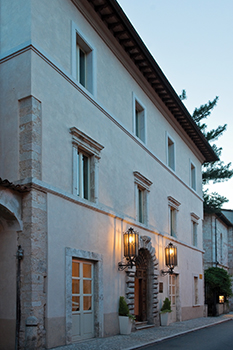
Family business
The 16th-century Palazzo Seneca had suffered no structural damage, thanks to a seven-year restoration that involved a lot of work on earthquake-proofing. The hotel is a family business and part of the luxury Relais & Châteaux collection, with brothers Vincenzo and Federico Bianconi at the helm.
“It’s important to ensure that our guests know that we take the risks of our location very seriously,” explained Federico Bianconi, “We now have a handbook in every room on earthquake procedure, precautions and reassurance on the structural safety of this hotel”.
We were sat at the end of a vast meeting table in a room concealed by a bookcase. This, along with the rich smell of wooden writing desks, a library of antique books and the soft arc of the stone ceiling, sets a decidedly haute-Hogwarts tone.
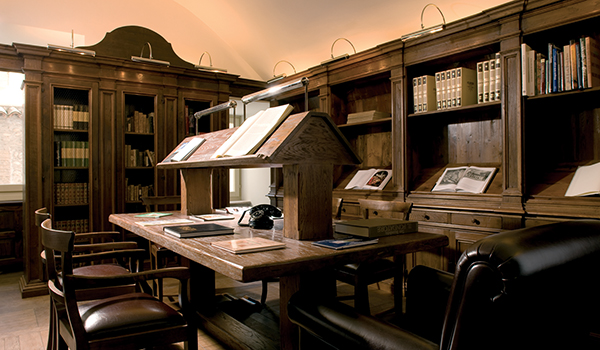
The hotel is undeniably luxurious yet distinctively Umbrian in its understated style. This, of course, was no accident: the Bianconis worked scrupulously with the region’s best artisans to create bespoke furniture using locally produced materials. The resulting aesthetic is extremely masculine with leather wing-back chairs, hand-carved wood and natural, earthy tones. It’s a dedicated and discerning celebration of Umbrian craft.
Arguably, however, the spoils of Umbria are best enjoyed on the plate. Palazzo Seneca’s restaurant, first opened in 2008, already carries a sense of great heritage and has scooped a Michelin star. Sicilian-born Palmisano leads the Vespasia kitchen with charm and finesse.
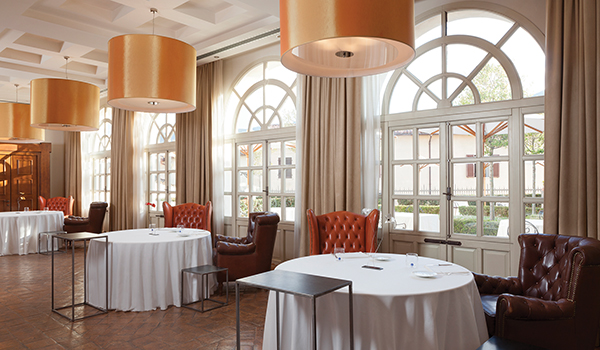
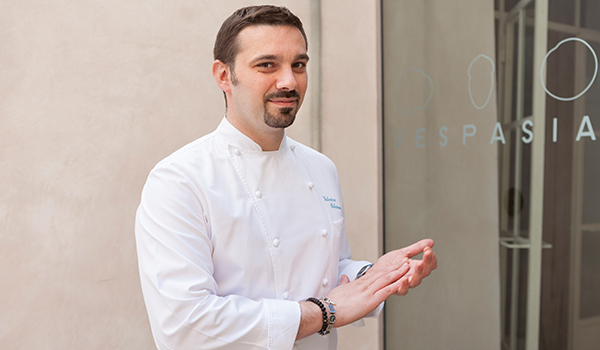
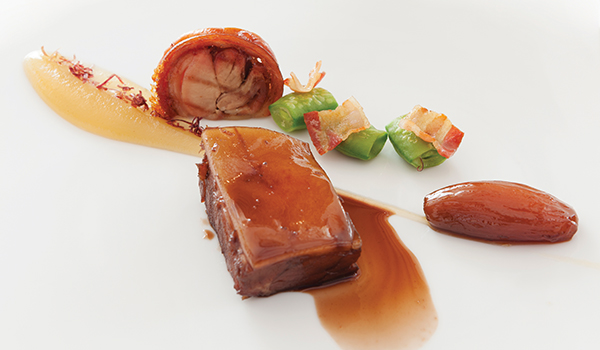
He is also a great protagonist, and passionately introduces our starter: “This dish represents Italian cooking, across all Italy, and to all Italians.” The waiters place two bowls of neatly twisted pasta before us, spaghetti al pomodoro. From this Michelin-star establishment to the no-fuss trattoria next door, Italy’s culinary code is clear: good produce requires little pomp.
Rich food heritage
Norcia is has an rich food heritage, best known for its wild boar, truffles, saffron, pecorino cheese, porcini mushrooms and high-quality pork. The town is revered for its meat production and the name carries a mark of excellence – the word for a salumi shop in central Italy is norcineria. The micro-region is also home to some of the world’s most famous lentils, grown in nearby Castelluccio. At 1,452 metres above sea level, it is the highest village in the Apennines, and one of the highest settlements in Italy. It was badly damaged by the earthquake and the road between Norcia and Castelluccio was closed until June, though it did briefly reopen earlier in the year for lentil farmers to sow their seeds. The isolated village sits above the magnificent Piano Grande, which explodes into colour in the early summer with a blanket of wild flowers. It’s this bright sea of cyclamen, iris, crocus, and poppies that helps support the tiny stems of the delicate lentil plants.
It’s a sad situation for businesses here and across the region, as tourists are hesitant to visit the area after the earthquake. Hotels some 85 kilometres away have experienced hundreds of cancellations despite suffering no damages; indeed, Palazzo Seneca, right at the epicentre, lost only vases and mirrors, which is testament to its strong refortifications. The timing was also unfortunate, as it’s between October and Christmas when travel agents book their summer tours and, without knowing when Norcia and its surrounding roads would reopen, they have avoided the area entirely.
“We hosted the grand reopening and press conference at the Palazzo in April,” says Bianconi, “and we’ve helped plan fund-raisers over the coming months to support the ‘I Love Norcia’ relief fund. We’re lucky that the town has connections with some high-profile sports people; many footballers have trained here and they’re keen to show their support, which is great for PR as it attracts national support of our cause.” Palazzo Seneca also pledged to open its swimming pool to local children over the school holidays after the ongoing closure of the town’s own facilities.
Prayer and work
Norcia is, of course, the birthplace of St Benedict, the founder of the Order of Saint Benedict, the Benedictine Monks. He was born at the end of the 5th century AD and is known for his motto Ora et Labora, ‘prayer and work’. The Order has remained faithful to this ethos with the ongoing production of its artisan beer, Birra Nursia. (Nursia was the Roman name for Norcia.)
The brewery itself suffered minor damages in the earthquake, and the monks responded with a limited edition birra del terremoto called I Love Norcia, which continues to raise money for reconstruction in central Italy. Some say the ‘beer of the earthquake’ has a unique and flavour, as it was fermenting in vats during the strongest earthquake to strike Italy in 36 years.
Norcia now desperately needs its tourists to return. A visit represents solidarity and support for the local people, and the euros spent in farm shops, restaurants and hotels directly help rebuild what has been lost.
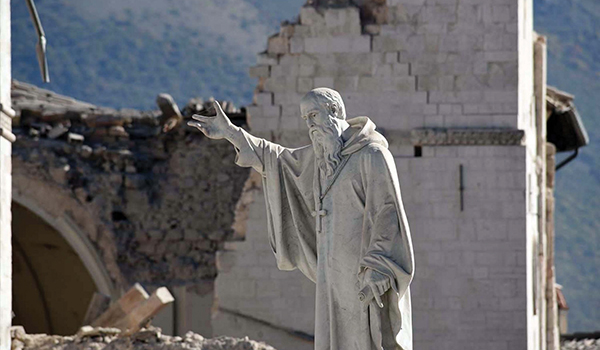
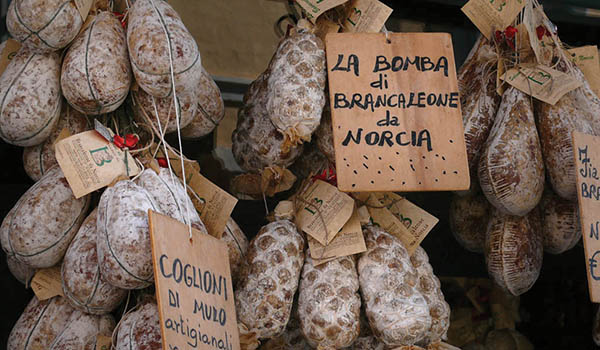
The region is a haven for foodies and adventurers, and autumn is a wonderful time of year to experience it. “The culinary activities we offer here are unique, and can only be found in this area” says Bianconi, “Our cooking classes and truffle-hunting trips, for example, are exclusive to the gastronomic traditions of Norcia. Outdoor activities are dictated by the landscape; people come from all over the world to experience trekking, rafting, mountain biking, and horse riding in the Sibillini Mountains National Park.”
Scour the woodland for nutty nuggets of truffle with an expert cavatore, head to the river for some of the country’s most exhilarating white-water rafting, or simply enjoy the pleasant pace of small-town life. Browse little, family-run shops, wander the narrow streets and admire the vast mountain views that materialise between the thick city walls. Sip a Birra Nursia outside a café in the warm evening sun, and devour the dishes of the region in tiny trattorias: a bowl of creamy lentils with sausage and a sluice of Umbrian extra-virgin olive oil; pasta alla Norcina with ricotta and pancetta; slow cooked meats with generous shavings of fresh truffle. And do it all knowing you are giving to the people of Norcia in your support of their beautiful and bountiful region.
![]()
